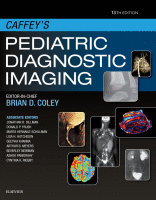Physical Address
304 North Cardinal St.
Dorchester Center, MA 02124

Spinal infections in children occur uncommonly. Etiologies include direct and indirect (hematogenous) inoculation by bacterial, viral, parasitic, and fungal agents. Direct bacterial infectious inoculation may be as a result of trauma, instrumentation, or via a preexisting congenital sinus tract or…

Embryology and Developmental Anatomy Spine formation begins early in gestation, commencing at the end of the second gestational week with formation of the Hensen node and continuing into the beginning of the third week with the appearance of the neural…

Vast improvements have been made in the diagnosis and therapy of fetal anomalies as a result of advances in imaging and surgical technology. Nowhere is this more applicable than in the fetal spine. Ultrasonography is the primary imaging modality for…

Pediatric spinal cord imaging relies heavily on ultrasound (US) in infants under 6 months of age and magnetic resonance imaging (MRI) thereafter. Other imaging modalities, such as radiography, computed tomography (CT), and nuclear scintigraphy, have a limited role but may…

Embryology The spinal cord forms in three stages beginning in the third gestational week. The first stage, neurulation, involves progression from neural plate to neural tube. The notochord becomes the nucleus pulposus of the intervertebral disks. The second stage, canalization,…

Incidence and Etiology Head trauma and resulting traumatic brain injury (TBI) are among the most common causes of morbidity and mortality in children. Head trauma alone is responsible for 50% of deaths in children ages 1 to 14 years. Approximately…

Overview Epilepsy is a common pediatric neurologic disorder. In North America, the overall incidence of epilepsy is approximately 50/100,000 per year, highest for children below 5 years of age and the elderly. Children are at higher risk for developing epilepsy…

Stroke is a leading cause of disability and death in children. Three distinct time periods can be used to categorize stroke in the pediatric population: fetal (14 weeks of gestation until the onset of labor), perinatal/neonatal (between late third trimester…

Stroke is defined as a neurologic deficit persisting for more than 24 hours and may be caused by cerebral ischemia or intracranial hemorrhage. The annual incidence of stroke in children ranges from 2 to 13 cases per 100,000 patients and…

Overview Brain tumors are the most common solid pediatric tumors and are the leading cause of death in children from solid tumors. The incidence rate of all childhood primary brain and central nervous system (CNS) tumors is estimated to be…